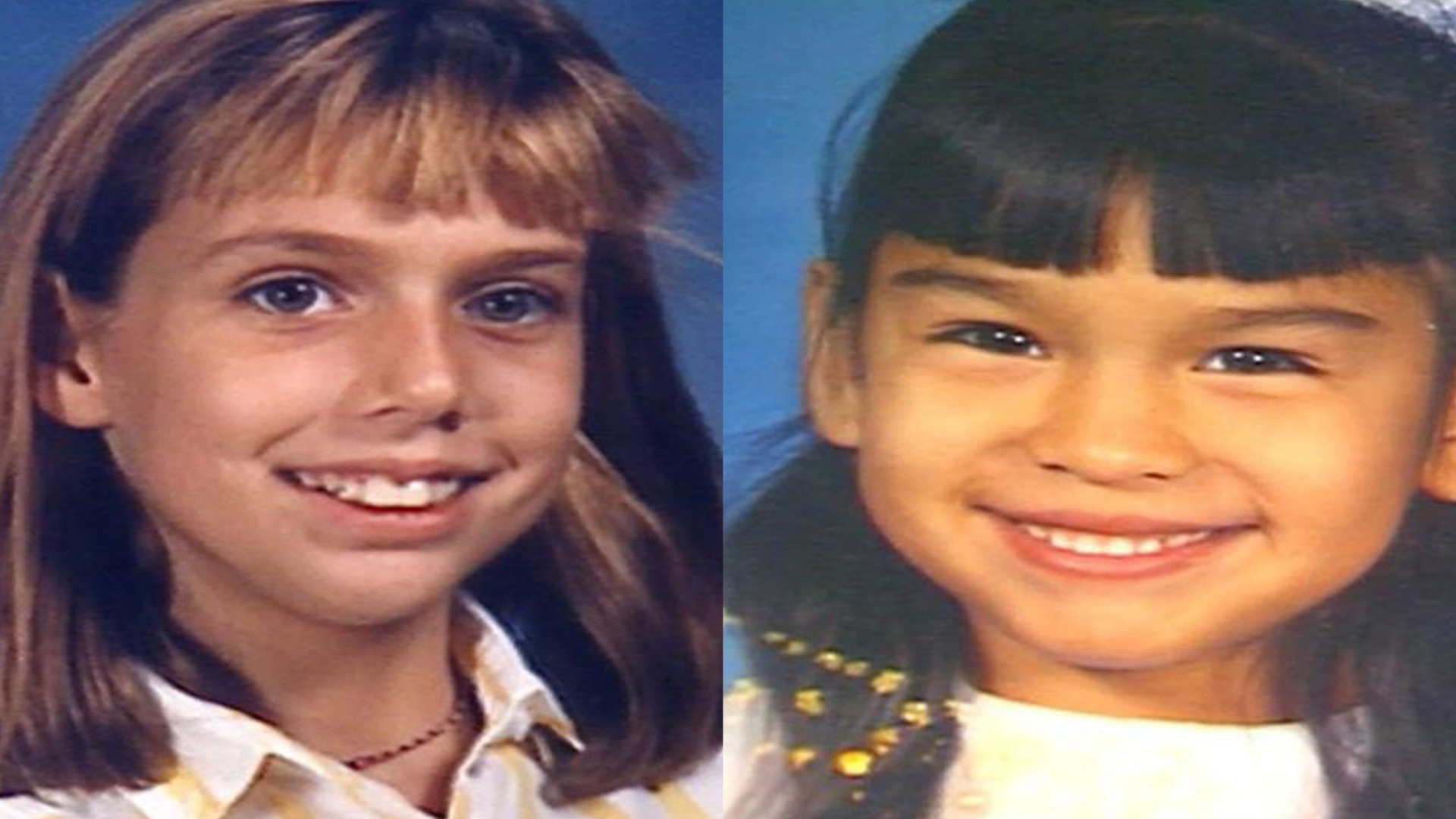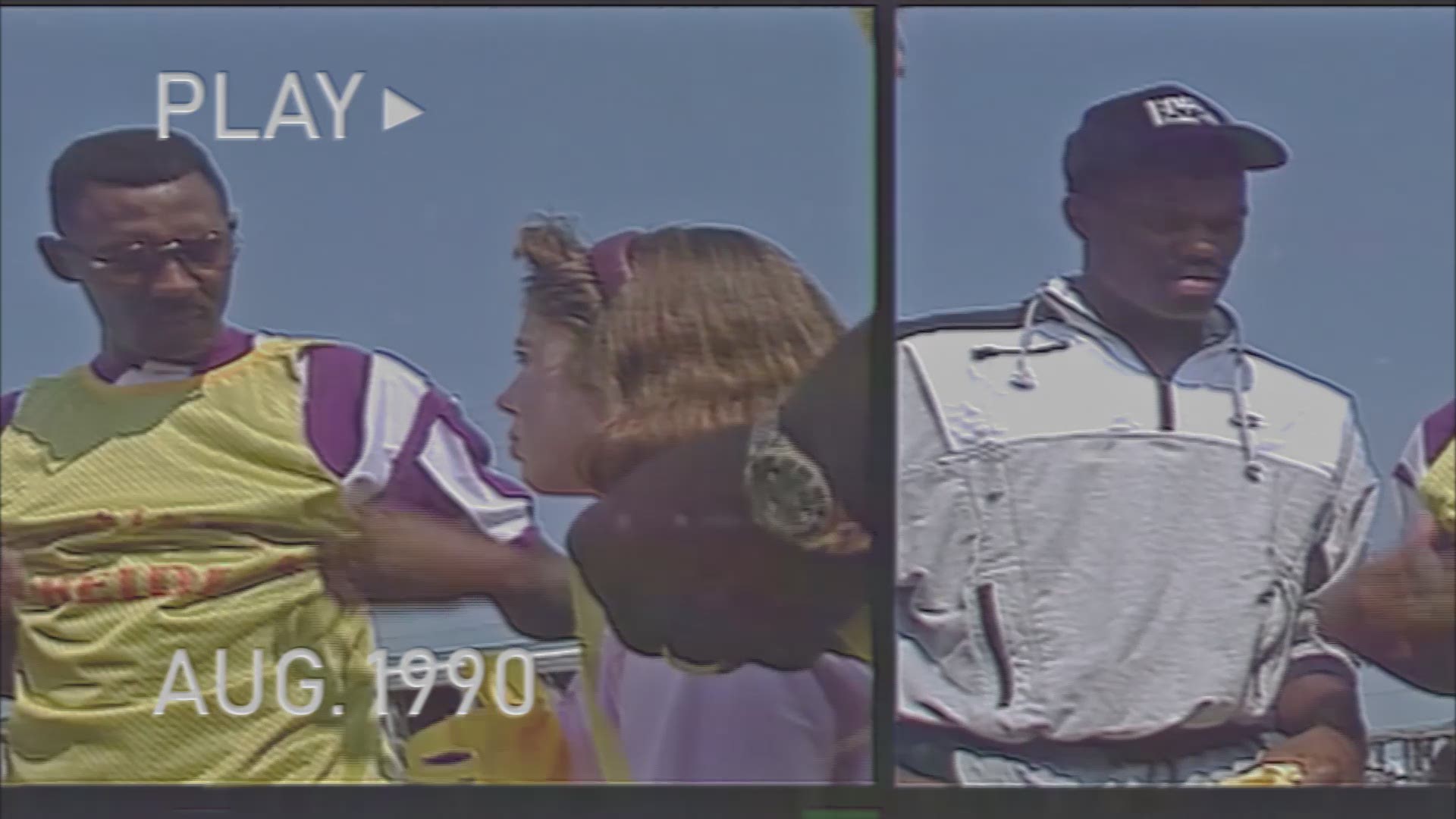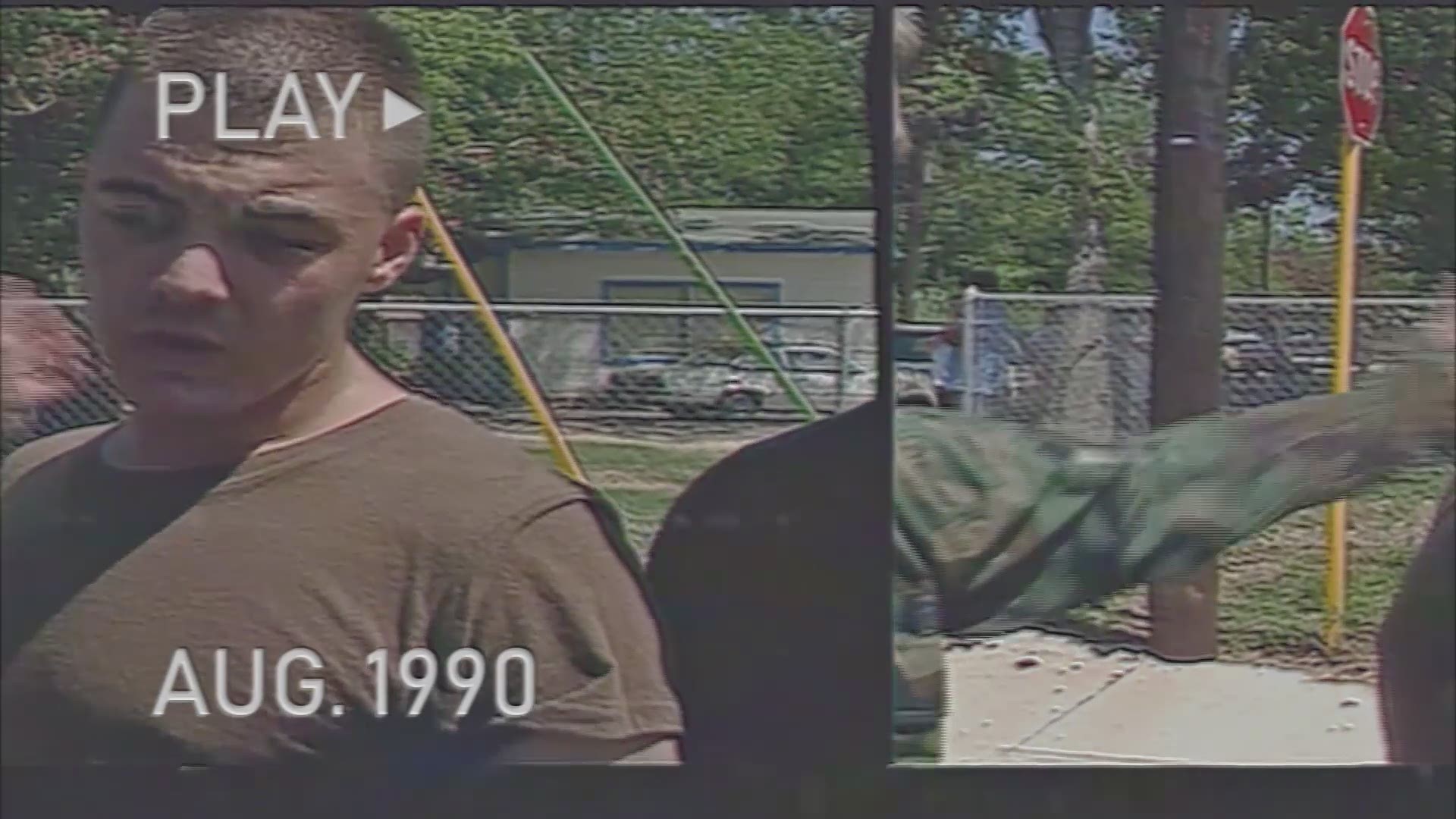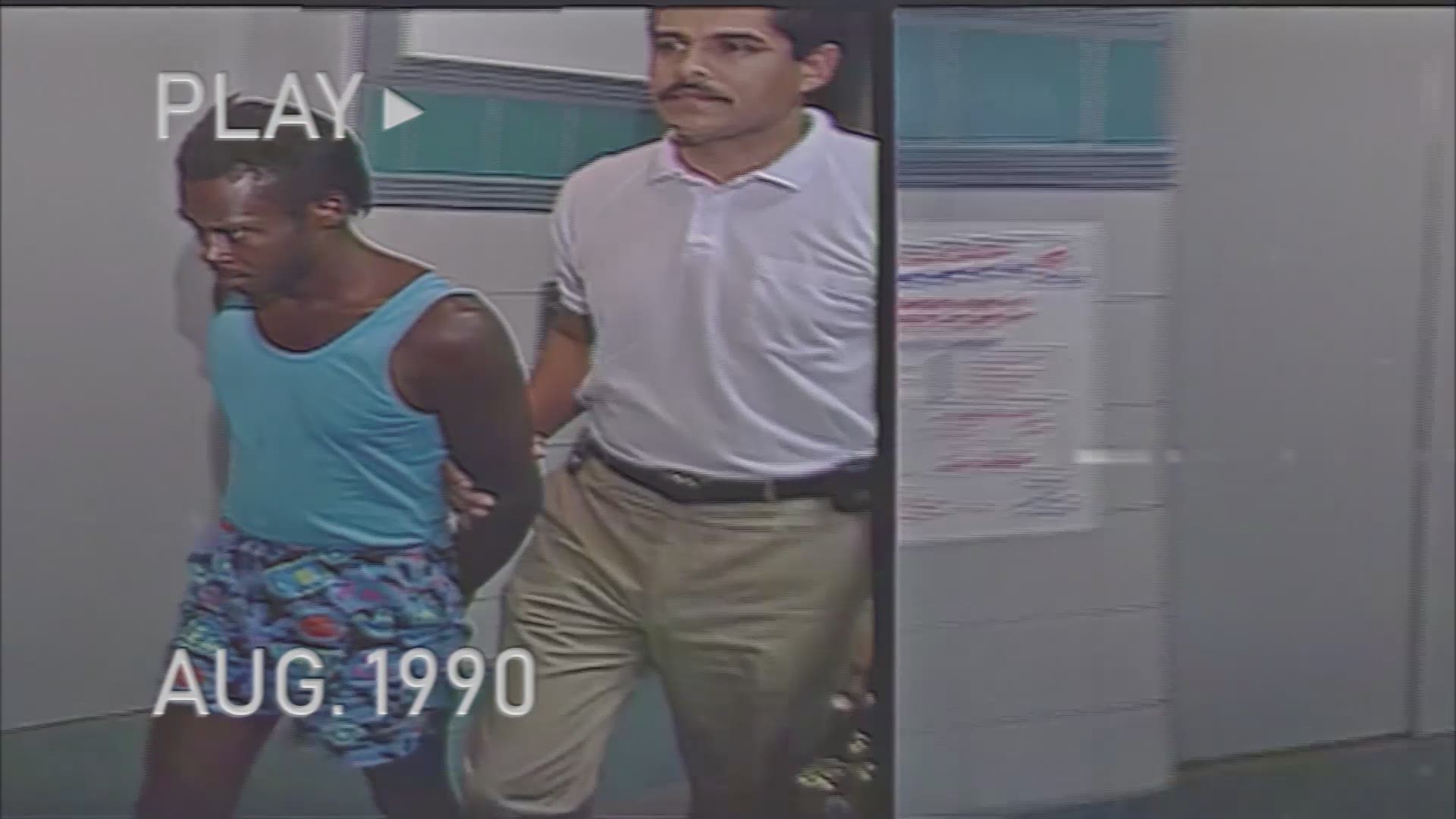SAN ANTONIO — August 1990 was the month that sent the Alamo City into a tailspin. During that month, in the thick of the South Texas heat, thousands showed up to search for two little girls who disappeared.

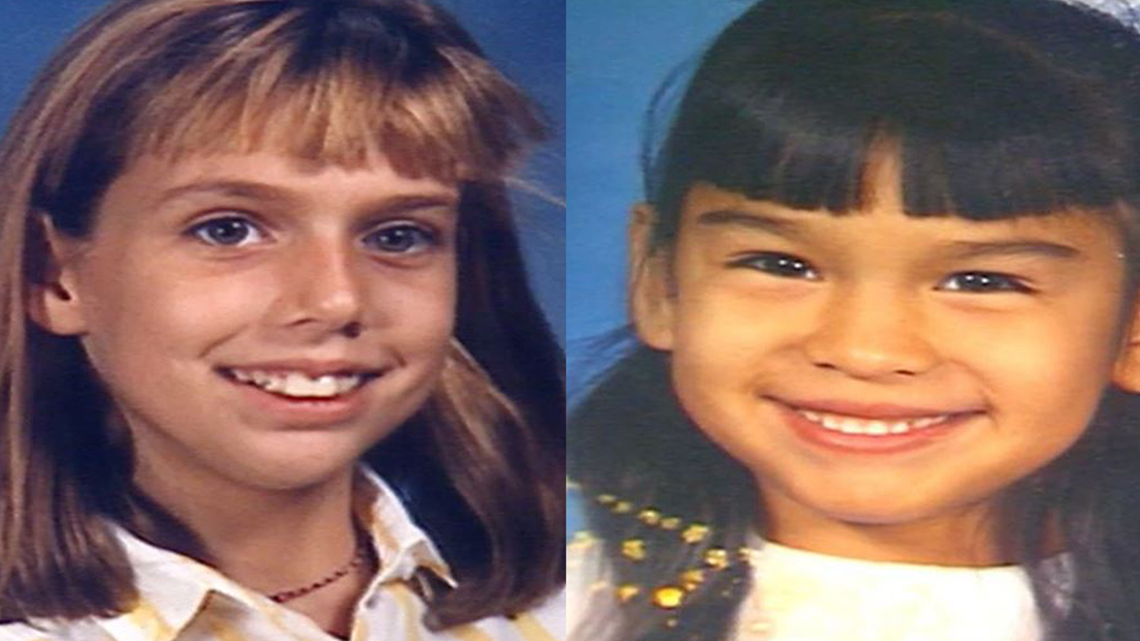
The bodies of 11-year-old Heidi Seeman and 7-year-old Erica Botello would be found later that month, a day apart, and the San Antonio community would never be the same. The girls’ killers? Never brought to justice.
On the 30th anniversary of the girls’ disappearances and murders, we revisit the cases that forever altered the lives of their families and this South Texas community.
The disappearance of Heidi Seeman
“She loved life. She loved her friends. She really was just pure joy.” That’s how Theresa Seeman describes her youngest daughter, Heidi.

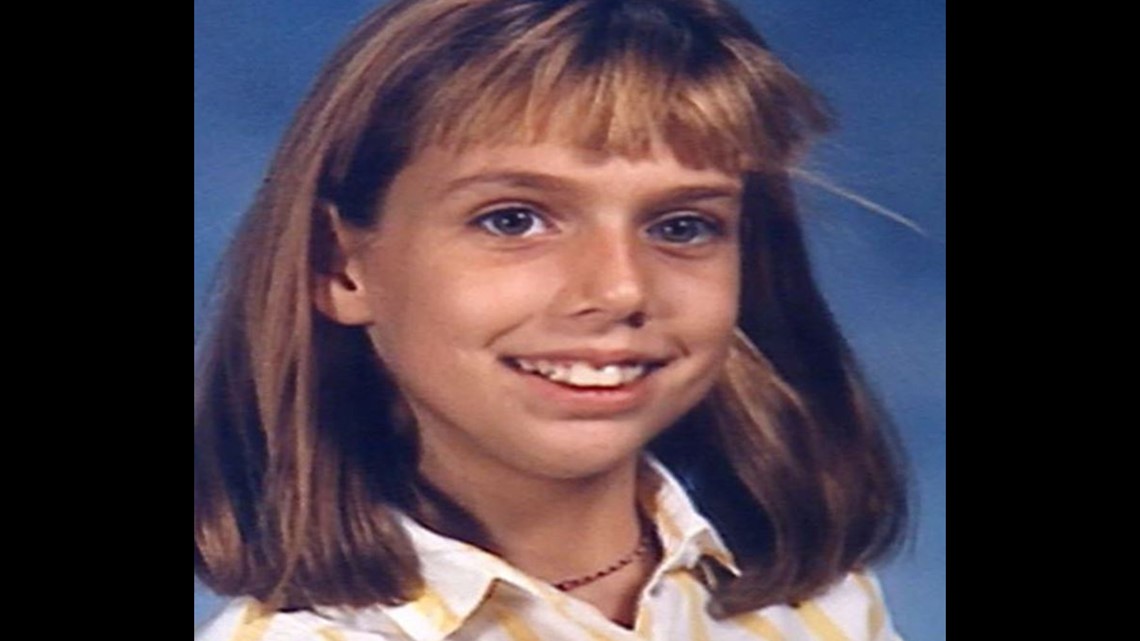
The 11-year-old girl, who was known for her sweet, talkative nature, disappeared while on her way home from a sleepover on the morning of August 4, 1990.
The Seemans were working in the garden outside their house when they noticed at 12:30 p.m. that Heidi wasn’t home yet. She had been due back by noon.
“She wasn’t the kind to just, you know, be late without letting us know somehow or, you know, it just wasn’t here,” recalled Heidi’s father, retired Air Force veteran Curtis Seeman.
“We knew something was wrong right away.”
“We knew something was wrong right away,” Theresa Seeman confirmed.
After calling over to the house of Heidi’s friend, the Seemans’ fears were confirmed: their daughter had left half an hour earlier. What followed was what can only be described as a whirlwind.
Police officers arrived, neighbors sprung into action and the Seemans drove around their northeast-side neighborhood looking for Heidi. During their preliminary investigation, officers learned that Heidi’s friend walked with Heidi to a halfway point between the girls’ houses.


While returning home, the friend looked back to check on Heidi and noticed that she was no longer there. The friend also later recalled a red car slowing down and looking at the girls.
“That’s when the police really started getting involved,” Theresa Seeman said.
According to the National Center for Missing & Exploited Children, 163 children went missing in Texas in 1990.

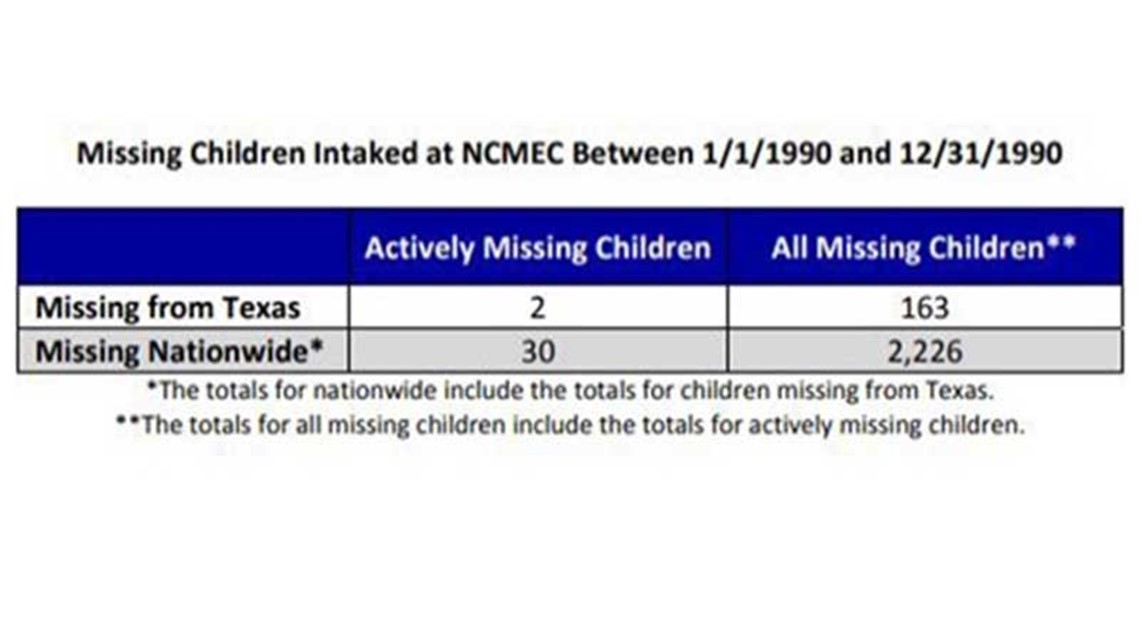
“What happened to Heidi and Erica (was) extremely rare 30 years ago, but it is even more rare today, and that is due to the capabilities of law enforcement. The response -- that community engagement -- has really made a difference,” explained Robert Lowery, former vice president of the Missing Children Division for the National Center of Missing and Exploited Children.
Despite Heidi’s disappearance happening before the 1996 creation of the Amber Alert System, the San Antonio community was quick to provide help to the Seemans.

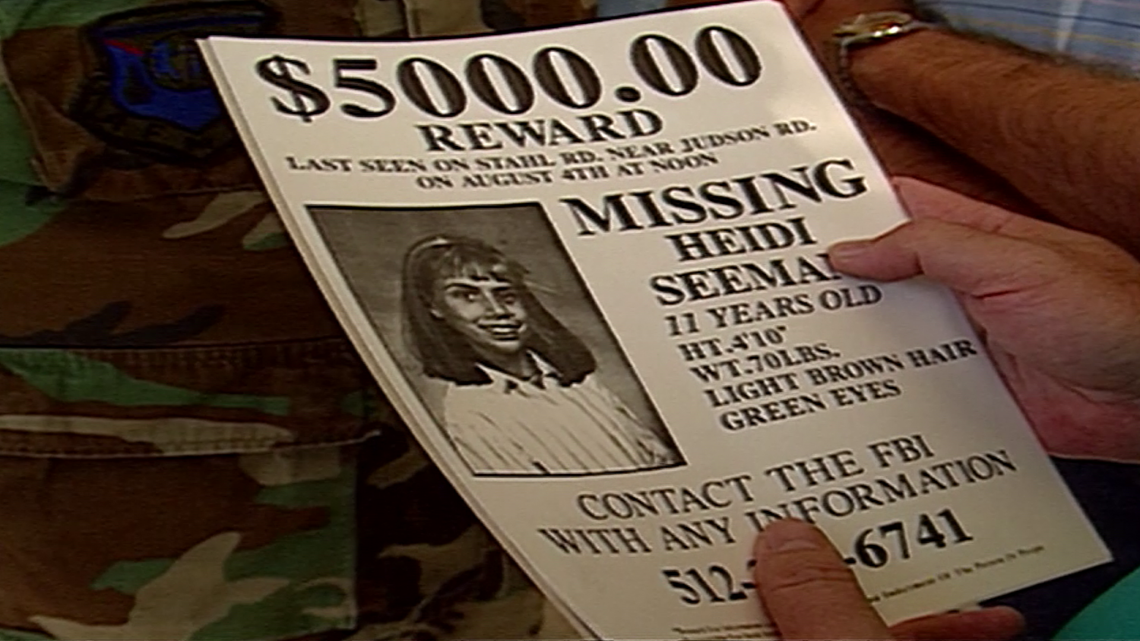
San Antonio-based grocery chain H-E-B offered a $5,000 reward for any information on Heidi’s disappearance.
Spurs players including David Robinson and Willie Anderson offered their support and assistance.
“Whatever they ask me to do, I’m willing to help in any way I can,” Robinson said at the time.
Go back in time | San Antonio Spurs offer support in the search for Heidi Seeman
San Antonio Mayor Lila Cockrell even declared August 11, 1990, to be "Find Heidi Day" and encouraged residents to help in the search for the young girl.
Caroline Stanley, a volunteer the same age as Heidi, told KENS 5 at the time why she decided to take part in the search.
“I know that my parents would be real worried if they lost me, and I was real concerned, so I wanted to help out," she said.
KENS 5 anchor Deborah Knapp and reporter Sue Calberg, who both covered Heidi and Erica’s cases, explained why they think so many people showed up to help in the searches.
“I just think we all could see our children in those two little girls.”
“Both of those were just sweet, innocent children who were outside. You know, Erica was in her front yard when she disappeared. Heidi’s walking home from an overnight sleepover," Knapp said. "I just think we all could see our children in those two little girls."

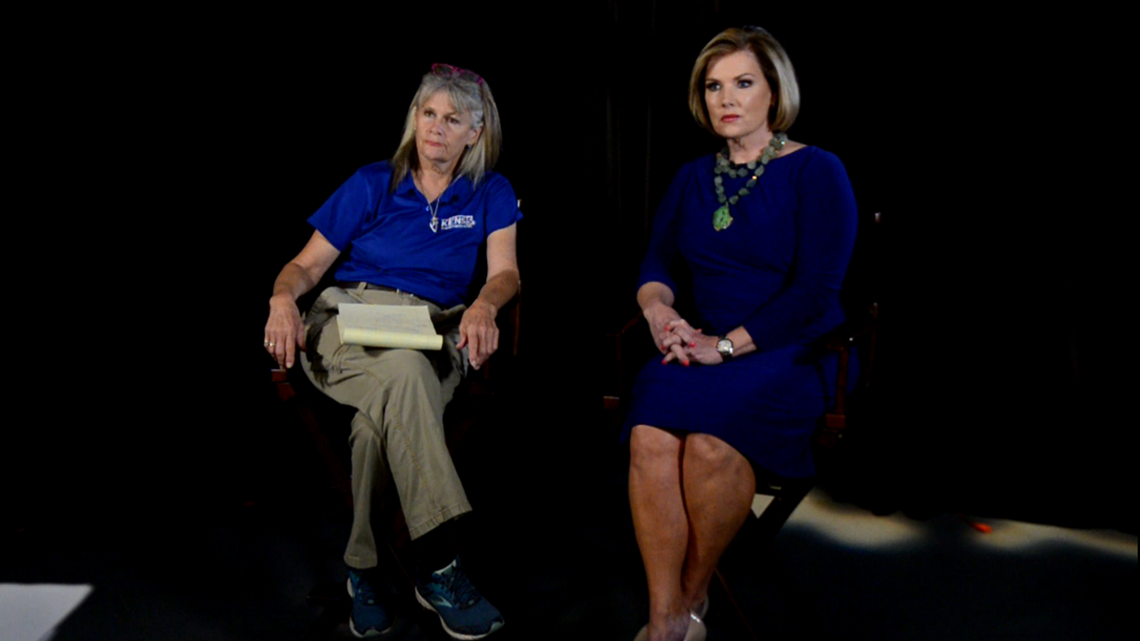
Calberg shared the common sentiment of parents of young children at the time: “It happened in the blink of an eye… And I think that’s why it scared us so badly, because everybody felt like 'that could be me.'”
Thirty years later, Curtis Seeman shared with KENS 5 how appreciative he and his wife were for all of the help they received during the search for Heidi.
“I know at one point they said that there were over 300,000 people searching on one day. That’s amazing to me. I just never… I could never comprehend that. But I sure appreciated it. I’m just sorry it turned out the way it did.”
"The absolute terror that does not get better with time. It does not lessen. It does not go away.”
During this time, what would later be known as the Heidi Search Center was created. The center offered assistance, resources and emotional support to families with missing children and adults. The center closed in 2018 due to a lack of funding.
In December 2019, former center director Dottie Laster spoke about the importance of the Heidi Search Center.
“I don’t think the public understands -- until you don’t know where your child is or your loved ones -- the absolute terror that does not get better with time. It does not lessen. It does not go away.”
It was a terror the Seemans knew all too well, and 21 days into the search for Heidi, it was a terror another San Antonio family would also understand.
The disappearance of Erica Botello
On August 23, 1990, Erica Botello, 7, was kidnapped from the West End Baptist Manor Apartments. Like Heidi, Erica was outside at the time of her disappearance.

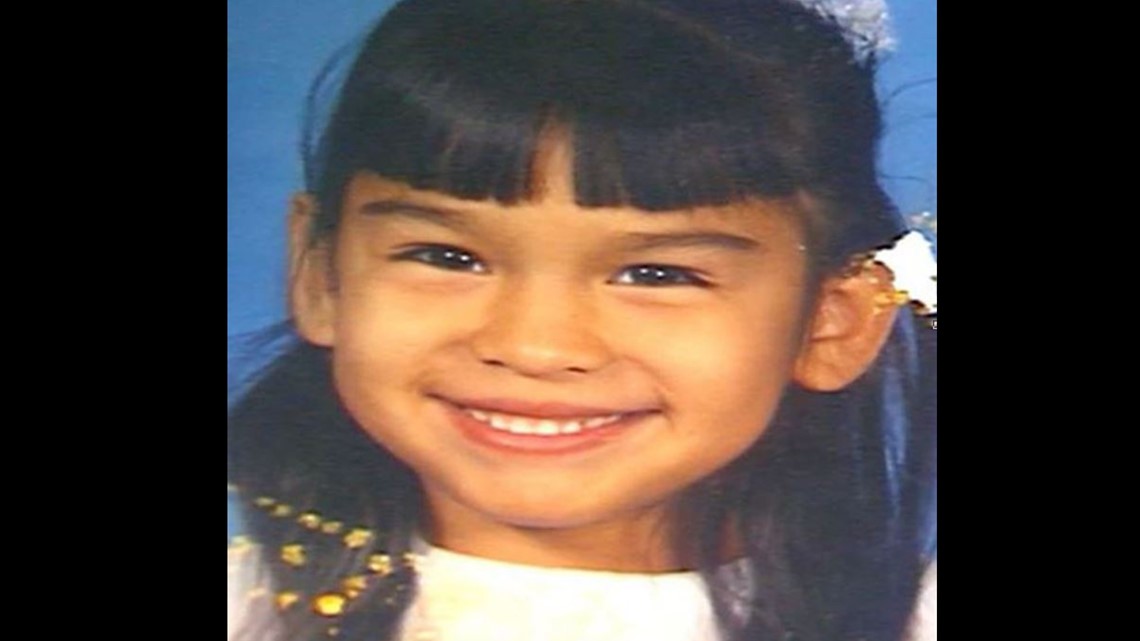
The Botellos declined to be interviewed for this story.
The Seemans shared their shock at hearing about the disappearance of another young girl.
“We couldn't believe that another child was missing, and she was even younger and smaller than Heidi. And when they came to us and they said another child is missing, we were devastated for the other family.” Theresa Seeman recalled.
Search efforts for Erica Botello began immediately, with the Seemans sharing all of their resources and support (including that of the Air Force) with her family. At the time, Curtis Seeman said: “I feel if I can help a little bit, I want to. I know what this family is going through and I want to help them get through it if I can.”
“Whoever has her, please bring her home.”
As local coverage of the searches for the girls continued, a family member of Botello’s pleaded with whoever had the young girl to bring her back.
“We wonder what she’s doing. We wonder if she slept alright. We wonder all of these things… and we want her home, and whoever has her, please bring her home.”
Go back in time | KENS 5 reporter Gina Galaviz covers the search for Erica Botello
Normally a place where kids could run wild and free, San Antonio was on high alert, and parents were keeping their children close.
“It wasn’t just two little girls that we lost. As a community, to some degree, I think we lost a sense of innocence,” Calberg said.
“I had small children at the time and you just didn’t want them out by themselves," Knapp recalled. "You know, we had 'stranger danger.' It’s a rare thing that a stranger kidnaps a child, but here we had it. And it was two children.”
Two children whose searches would soon come to an end.
Discoveries
On August 26, 1990, three days after she had disappeared, the body of Erica Botello was found in a storm drain, yards away from her home.
Joseph Jablanski, an 18-year old airman completing basic military training at Lackland Air Force Base, would be the one to find her.
Go back in time | Lackland AFB airman finds body of missing girl
“I remember screaming. I screamed at the top of my lungs, and I tried to backtrack my way out of the tunnels as fast as I knew how," Jablanski said in an interview with KENS 5 in 2019. "What I saw was wrong. What I saw needed to be fixed, and somebody needed to be brought to justice because of that. This is a child. Even more so, because it’s a child, it’s a hard thing to carry.”


The following day, it was confirmed that a body found in a field in Wimberley, one day before the discovery of Erica’s body, was that of young Heidi Seeman.
Funeral services for both girls were held on the same day.


“This is one of the most tragic days I can ever remember in this city.”
At the time, San Antonio city councilman Jimmy Haslocher told KENS 5: “This is one of the most tragic days I can ever remember in this city, as we say goodbye to two precious little girls. It’s very, very difficult.”
Investigation
During the girls’ separate murder investigations, several people were considered as suspects, but no one was ever convicted in either crime.
In Heidi’s case, the Air Force Office of Special Investigations (OSI) zeroed in on Major Eric Duncan, an early leader in the search efforts for Heidi and the former supervisor of Heidi’s father, Curtis Seeman.
According to the Air Force affidavit filed in the case, obtained by KENS 5 at the time, Duncan’s car matched the description of the car Heidi’s friend had seen prior to Heidi’s disappearance. Duncan’s appearance also reportedly fit the description of the driver of that car.


Curtis Seeman supported initiating charges against Duncan through the military judicial system.
“I don't know that he did it either. I can't say that for sure. But it sure did seem like it.”
“The one suspect that they did have from the Air Force OSI... It looked like the case they had against him was fairly strong, but the SAPD didn't believe that. I'm not sure exactly why, but what they showed us as far as a witness rights briefing, you know, I don't know that he did it either. I can't say that for sure. But it sure did seem like it,” Curtis Seeman explained via phone earlier this year.
While charges were preferred (or initiated) against Duncan through the military justice system, the charges were dropped following an Article 32 hearing.*
*In the military justice system, an Article 32 hearing is similar to a pre-trial preliminary hearing in civilian law. At an Article 32 hearing, a hearing officer, appointed by the convening authority, will listen to the evidence presented by the prosecution to determine whether there’s enough evidence to recommend that the case go to trial.

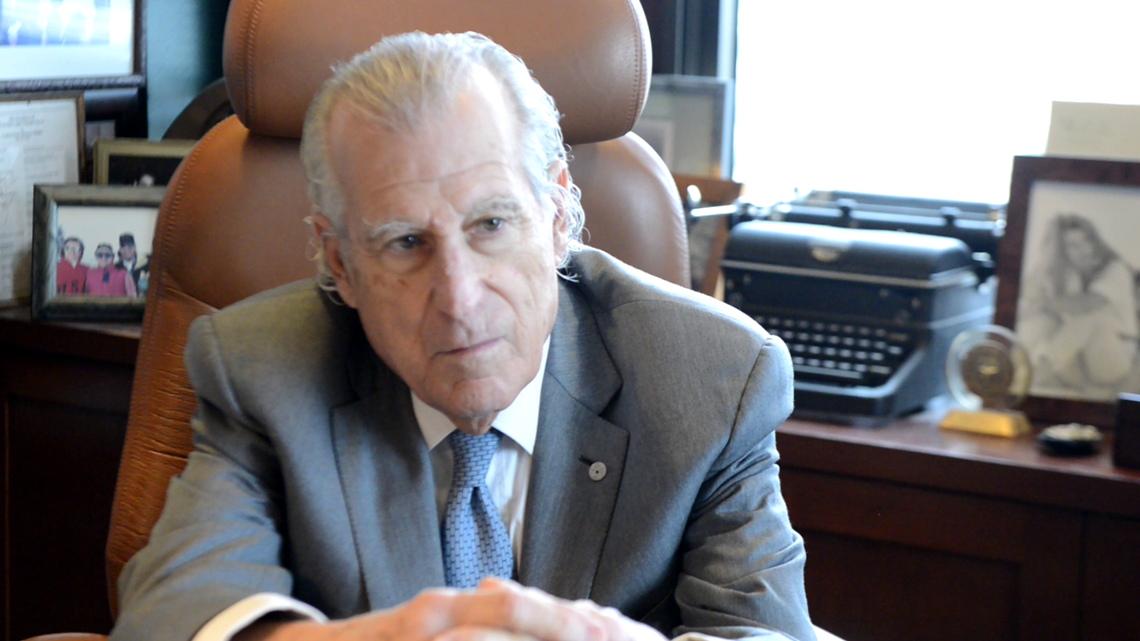
Earlier this year, Duncan’s lawyer at the time, criminal defense attorney Gerry Goldstein, explained why he believes investigators looked at Duncan.
“If you recall, he was very active in the search for the young victim, and sometimes, whether it’s justified or not, the investigators -- and this happens in the civilian world just as much as in the military -- that makes you a target," he said. "I mean, this was a terrible case… it tore at the heartstrings of our community. And I believe, this is my opinion, my personal opinion is that Eric Duncan’s biggest crime was being so actively involved in trying to find her.”
Meanwhile, SAPD investigators had a target of their own--- Jerry Lee Nabor, but his name was cleared when DNA test results came back negative.
In Erica’s case, several arrests were made, 31-year-old Kenneth Earl Pope, 32-year-old Sherman Bedford and 17-year-old Roderick Springs.
Go back in time | Arrests made in connection to Erica Botello murder
But according to the San Antonio Police Department, two of the three suspects charged in Erica’s murder were no-billed by a Grand Jury, while the case against the third suspect was dismissed after a confession was ruled inadmissible because of “the deficient mental state of the defendant."
When contacted for comment, a department spokesperson denied our request for an interview, stating: “I was advised by the Homicide Sgt. that the family does not wish to bring light to the case and have asked that we not discuss the case with the media. We are granting the family's wishes and will not be providing the interview.”
In a separate statement, the department’s spokesperson said, “There is no other information or evidence to indicate that anyone other than the listed suspects were involved in this crime. The case is considered closed by arrest.”
Bexar County District Attorney Joe Gonzales offered the following statement when contacted for comment:
In 1990, a Bexar County Grand Jury declined to indict two people for a charge of capital murder. A capital murder charge against a third suspect was dismissed in 1991 for insufficient evidence. Because there is no statute of limitations for the offense of capital murder, should the investigating agency obtain new evidence and file a case with our office for review, we could present it to a Grand Jury for possible indictment.


As for Heidi, her case is now in the hands of the Texas Rangers.
Ranger Trampas Gooding, who became the lead investigator in Heidi’s case back in 2007, said in a statement to KENS 5 earlier this year that he is “fighting to make this case one that will see results.”
The Seemans shared their thoughts on the lack of justice for both Heidi and Erica.
“We wanted them in jail for Heidi’s death, for Erica's death, but also so that they couldn't take another child's life.”
“It's heartbreaking. Not only because they weren't brought to justice, for the girls, but also we don't know that they're not doing it again. That's part of it. We wanted them in jail for Heidi’s death, for Erica's death, but also so that they couldn't take another child's life,” Theresa Seeman said.
“We don't want other families to go through this ever. It's just not something that any family should ever have to go through and suffer. It is just -- and it's disappointing, you know -- that nothing was ever really solved,” Curtis Seeman said.
Legacy
And while their daughter’s killer had never been brought to justice, Theresa Seeman says she hasn’t given up hope.
“It’s hard to have hope 30 years later, but they have solved cases this much later. I haven’t completely given up.”
Rather than focus on their daughters’ deaths (Heidi’s older sister Heather died unexpectedly in 2019), the Seemans choose to celebrate the girls’ lives and all the good that came of the Heidi Search Center prior to its closing in 2018.


“We have statistics that we kept over 27 years. And so out of around 4,000 cases, 98 percent were located. Ninety-four percent located alive,” said Dottie Laster, former director of the Heidi Search Center.
The Seemans said their daughter’s biggest legacy is all the love and caring that carried on through her.
“I think she would be very proud of all the work the Heidi Search Center did. I think she would be happy with that. And I think that would make her smile. And you know, knowing that she helped all of those people as much as she loves to take care of people and things,” Curtis Seeman said.
Theresa Seeman added: “She saw the good. And I think that helps us see the good. I think it helps other people see the good.”
How you can help
- The Heidi Project page on Facebook “carries on the existing cases of the Heidi Search Center.”
- Anyone with any information can reach out to the San Antonio Police Department by calling the Homicide Unit at 210-207-7635, by calling Crime Stoppers at 210-224-STOP (7867), or by sending an email to homicide@sanantonio.gov.
- Information for the Texas Department of Public Safety’s Texas Rangers can be sent to the Texas Crime Stoppers. All tips are anonymous, and tipsters could receive a cash reward of up to $3,000 for information that leads to the arrest of the person/persons responsible for a cold case. Tipsters must call the Crime Stoppers hotline at 1-800-252-TIPS (8477) to be eligible for the cash reward.
Videos:
TV Version
Extended Version

